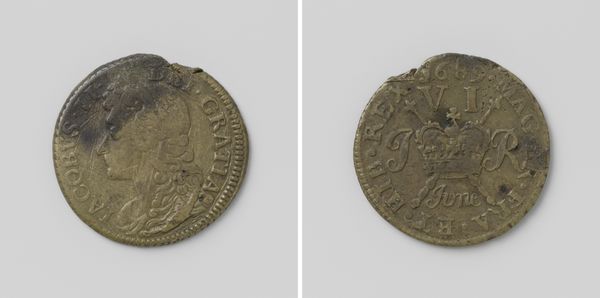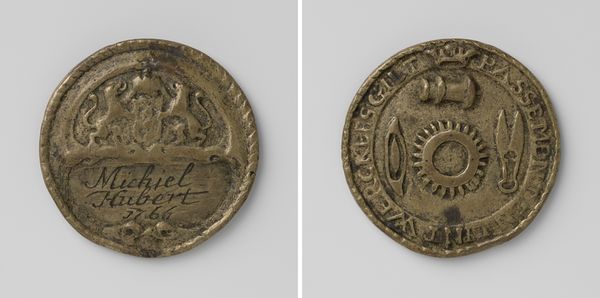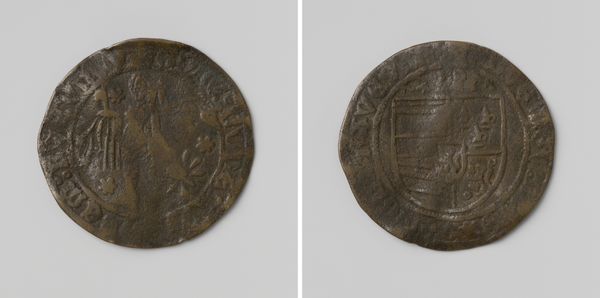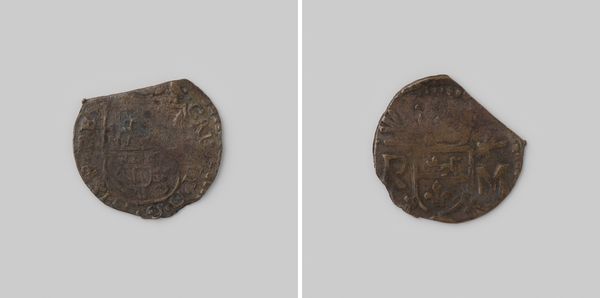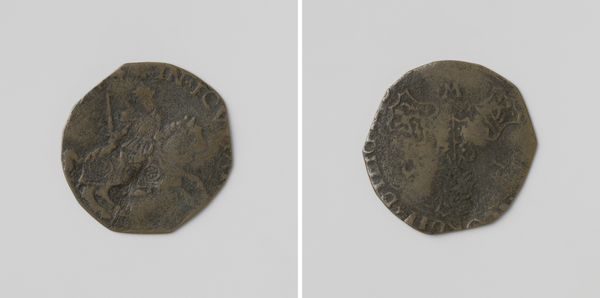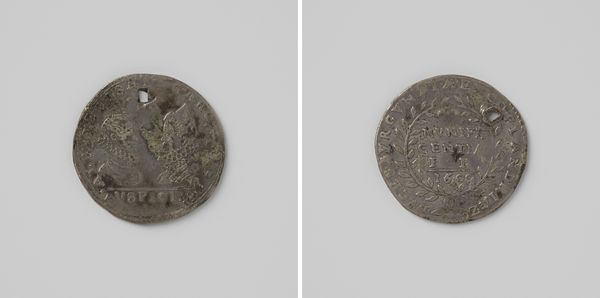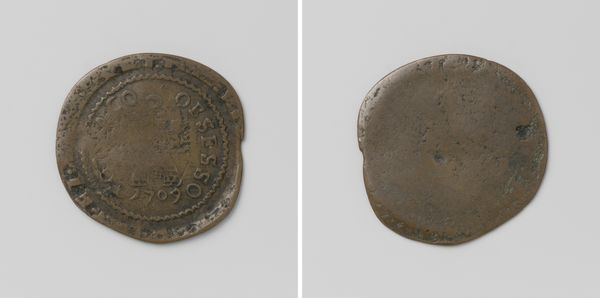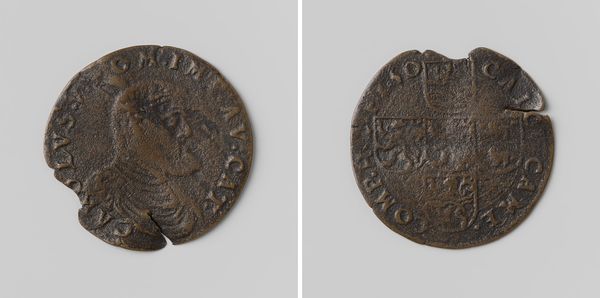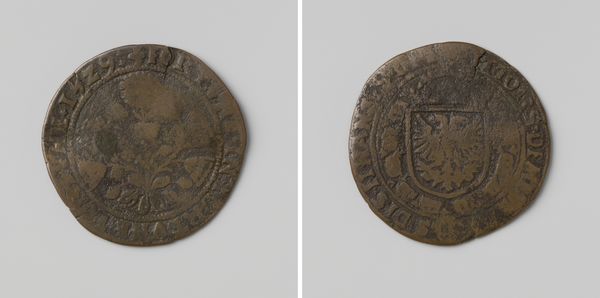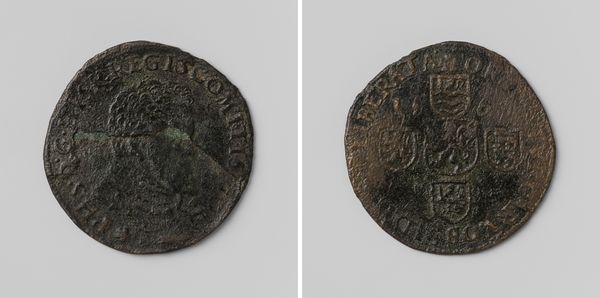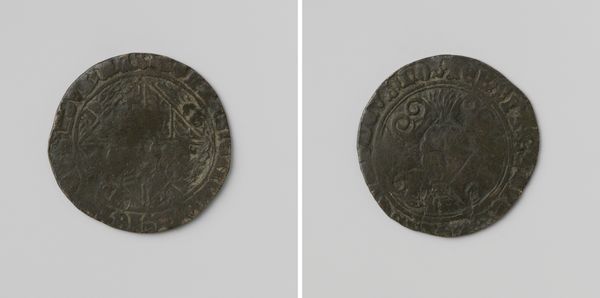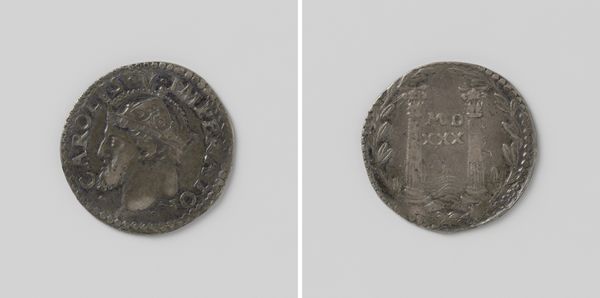
Giovanni II Bentivoglio, heer van Bologna ontvangt het muntrecht van keizer Maximiliaan I 1494
0:00
0:00
metal, bronze, sculpture
#
portrait
#
metal
#
bronze
#
sculpture
#
history-painting
#
italian-renaissance
Dimensions: diameter 2.8 cm, weight 11.76 gr
Copyright: Rijks Museum: Open Domain
Editor: So this is a bronze medal by Francesco di Francia, dating from 1494. The inscription refers to Giovanni II Bentivoglio receiving the right to mint coins from Emperor Maximilian I. It feels very formal and…almost cold? What do you see in it? Curator: I see a powerful commentary on the performance of authority, right? Bentivoglio's legitimacy as a ruler was tied to this imperial concession, visually broadcasting his status through carefully chosen imagery and text. These medals functioned as political propaganda. Editor: Propaganda, even back then? It seems so…official, though. Curator: Absolutely. Consider the Italian Renaissance as a period of intense political maneuvering, with various city-states vying for power. The choice of bronze as a medium adds to this sense of permanence and enduring legacy, don't you think? And think about the symbolism; do you notice the profile portrait echoing classical Roman emperors? Editor: Now that you mention it, I see that resemblance! How interesting that he would make that association so obvious. I suppose that implies ambition on Bentivoglio's part? Curator: Exactly. This piece isn't just about recording a historical event; it's about shaping perceptions of power, about legitimizing rule through strategic self-representation. How does this impact our reading of the medal? Does our contemporary viewpoint influence your appreciation of the medal? Editor: Definitely. I see it less as a neutral object now. It shows that those seeking power must root their image in familiar historical narratives. Thank you! Curator: And thank you. It's rewarding to explore those tensions between art, power, and historical context with you.
Comments
No comments
Be the first to comment and join the conversation on the ultimate creative platform.
